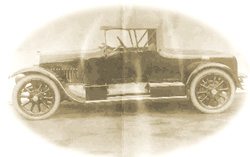|
|
1920 Humber Hub Cap Last updated: 05 Dec 2016 |
 Once in a while, a fun job comes up - Crawford "Oilyman" Stirling has
bought a 1920 Humber Sportster, and clearly cannot just go to the shops to buy parts for it.
Once in a while, a fun job comes up - Crawford "Oilyman" Stirling has
bought a 1920 Humber Sportster, and clearly cannot just go to the shops to buy parts for it.
He has asked me to make a set of hub caps for the car as they were missing when he bought it - luckily, he did manage to borrow one to allow us to make a duplicate.
The game plan here is to make some two-pack vulcanised rubber moulds of the part, then use these to cast plaster duplicates. The plaster duplicates can then be used with high definition oil bonded sand to cast the new caps four at a time. A little machining work will be required to form the threads so the original part is going to have a ring fitted over the original threads to leave some "meat" on there for the final machining work.
These pages are maintained by Duncan
Munro. All content on this site is Copyright ©2002-2025 Duncan
Amplification.
Warning: These pages consist of images and descriptions of equipment
which can reach high temperatures creating hazardous and potentially dangerous
situations. These pages should not be taken as a step by step guide on how
to construct any items or carry out any particular procedure, nor should any
references to safety contained herein be taken to guarantee safety in all
situations.




